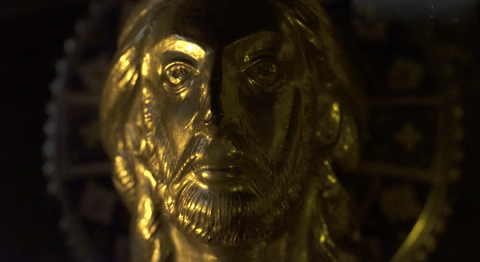Ephemeral Liveliness: Gold, Chant, and the Eucharistic Rite
This paper explores an unusual take on the concept of animation in medieval Christian art understood not as the mastery of lifelikeness and mimesis, but the craftsmanship of liveliness. Focusing on the golden retable of the Pentecost from Stavelot-Malmedy (Lotharingia),I argue that this inspiriting of the medieval image is expressed in the use of chameleonic materials like gold and enamel and their manipulation in time and space to create unstable phenomena of moving shadows and glitter that elicit the perception of Spirit in matter. Chant and the performance of the liturgical ritual further intensify this sensorial experience of animation. This exploration ultimately uncovers a parallel between the medieval performative image and the contemporary installation art.
Pentcheva’s research on medieval art includes studies on the cult of the Virgin in Byzantium, multi-media relief icons, and an exploration of the architecture, acoustics and ritual in Constantinople’s Great Church, Hagia Sophia. She has published three books with Pennsylvania State University Press: Icons and Power, 2006 (recipient of the Nicholas Brown Prize of the Medieval Academy of America, 2010), The Sensual Icon, 2010, and Hagia Sophia, 2017 (receipient of the American Academy fo Religion 2018 prize in historical studies) and edited the volume Aural Architecture, Ashgate 2017 that synthesized the research of the interdisciplinary project “Icons of Sound” (2008-present) she co-directs at Stanford. Pentcheva has received numerous fellowships among which are a Guggenheim, American Academy in Rome, Mellon New Directions, and Wissenschaftskolleg, Berlin.
